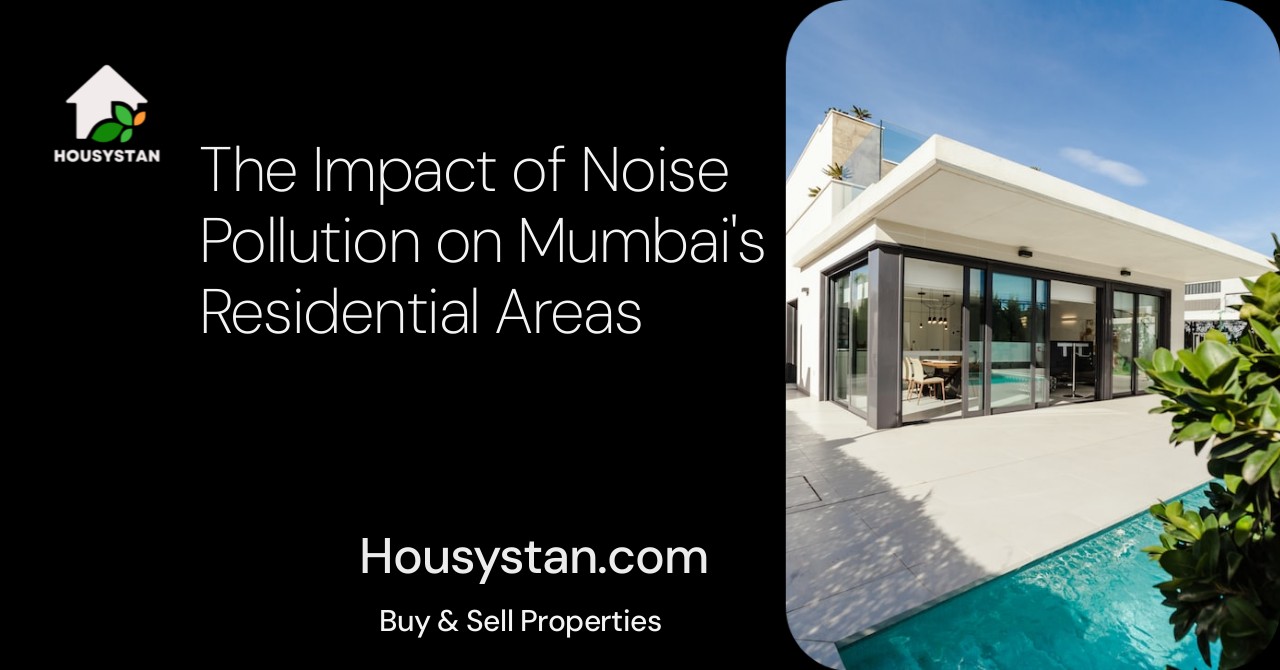The Impact of Noise Pollution on Mumbai's Residential Areas
Read latest blogs and articles from Housystan

The Information mentioned here was last updated on:
31/12/2025The Impact of Noise Pollution on Mumbai's Residential Areas
Mumbai, India's bustling financial capital, is known for its vibrant spirit and never-ending hustle. However, along with its vibrant culture and economic opportunities comes a downside—noise pollution. As one of the most densely populated cities in the world, Mumbai grapples with the constant hum of traffic, construction work, and an unending list of urban sounds. In this blog, we delve into the effects of noise pollution on the city's residential areas, outlining the challenges it poses for inhabitants.
Understanding Noise Pollution
- Verified Tenants/Buyers
- Unlimited Property Listing
- Zero subscription/charges fee
Noise pollution, defined as harmful or annoying levels of noise, is one of the most pervasive yet often overlooked pollutants in urban environments. It comes from a variety of sources, including road traffic, aircraft flyovers, construction activities, loudspeakers, and even everyday household appliances. Noise pollution is different from other forms of pollution because it is invisible, thus frequently underestimated, yet its effects are very tangible.
Sources of Noise in Mumbai’s Residential Areas
Traffic: The Unending Roar
Traffic is arguably the most significant source of noise pollution in Mumbai. The city’s roads are constantly bustling with the cacophony of honking horns, revving engines, and screeching brakes. Mumbai's residents are familiar with the daily gridlock, with the constant drone of vehicles being a part of everyday life. With an ever-increasing number of vehicles, traffic noise has become a major concern for those living in proximity to major roads and highways.
Construction Work: Building Booms and Bustles
Mumbai is a city perpetually under construction, with skyscrapers rising and older buildings undergoing renovation. This construction activity produces substantial noise, often starting early in the morning and continuing late into the night. The sound of heavy machinery, drilling, and hammering can be overwhelming, disrupting peace and tranquility for those living nearby.
Festivals and Public Announcements
Mumbai is known for its lively festivals, which, while colorful and joyous, contribute significantly to noise pollution. Loudspeakers blare music and announcements, particularly during festivals like Ganesh Chaturthi and Diwali. Additionally, local gatherings, rallies, and announcements often include loud public address systems, adding to the noise pollution levels in the city.
Health Impacts of Noise Pollution
Noise pollution is more than just an annoyance; it has real health consequences. According to research, prolonged exposure to noise pollution can lead to a range of health issues, affecting both physical and mental well-being.
Physical Health Risks
- Hearing Loss: Extended exposure to high noise levels can lead to hearing impairment. Traffic noise and constant urban hustle can damage sensitive structures in the inner ear, leading to temporary or permanent hearing loss.
- Hypertension and Heart Problems: Continuous noise pollution can increase stress levels, leading to hypertension, higher stress hormone levels, and consequently, cardiovascular diseases. Studies have shown that people living in noisy environments are at a greater risk of heart attacks and strokes.
Mental Health Implications
Noise pollution takes a toll on mental health as well. Constant noise can lead to stress, anxiety, sleep disturbances, and even depression. It interferes with concentration and productivity, affecting the quality of life. The stress caused by unwanted noise often manifests in irritability and reduced ability to cope with everyday challenges.
Impact on the Quality of Life
Sleep Disturbances
Sleep is a critical component of overall health, and noise pollution is a significant disruptor. According to reports, many residents in Mumbai struggle with sleep disturbances due to incessant noise, leading to chronic sleep deficiency. This can result in decreased daytime alertness, mood swings, and impaired cognitive function.
Children's Cognitive Development
Children are particularly vulnerable to the effects of noise pollution. It can interfere with their learning and cognitive development, as constant disturbances lead to difficulties in concentration and memory retention. Schools located near busy roads or construction sites may see lower academic performance among their students.
Community and Social Life
Excessive noise can strain social interactions within communities. It leads to decreased social cohesion as people become less likely to engage in community activities or gatherings due to noise stress. This isolation can further impact mental health and well-being.
Noise Regulation and Mitigation Efforts
Government Regulations
The Indian government has set certain noise standards to mitigate pollution. The Noise Pollution (Regulation and Control) Rules, 2000, aim to control and reduce noise pollution levels. However, enforcement remains a challenge given the city's density and infrastructure.
Urban Planning and Infrastructure
Improved urban planning and infrastructure development can significantly reduce noise levels. Constructing better insulated buildings, creating designated green zones, and implementing effective traffic management strategies can help address noise-related issues. Sound barriers and double-glazed windows are some of the architectural solutions that can be employed in noise-prone areas.
Community and Individual Initiatives
Residents can also take steps to reduce noise in their local environments. Planting more trees and shrubs can act as natural sound buffers. Additionally, communities can advocate for quieter practices during festivals and public events while making use of technology such as noise-cancelling machines or earplugs to reduce noise exposure within homes.
Looking Forward: Creating a Quieter Mumbai
Efforts to tackle noise pollution in Mumbai require a collaborative approach involving policymakers, urban planners, and residents. Sustainable urban development that prioritizes noise reduction can improve health outcomes and enhance the quality of life. By recognizing the serious implications of noise pollution, Mumbai can move toward a quieter, healthier future.